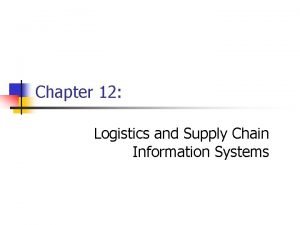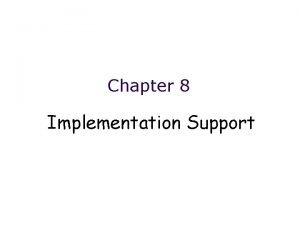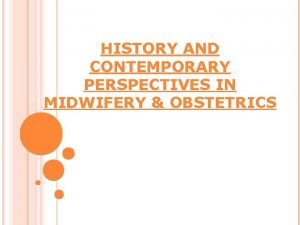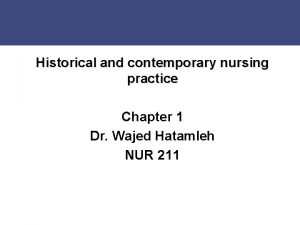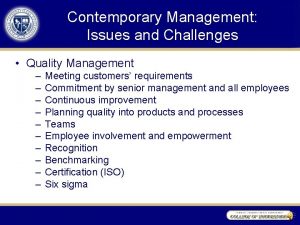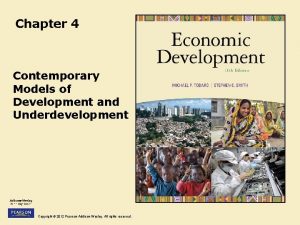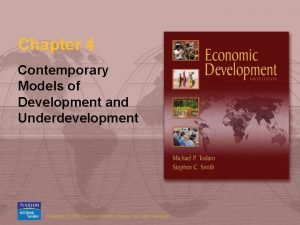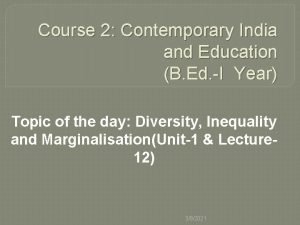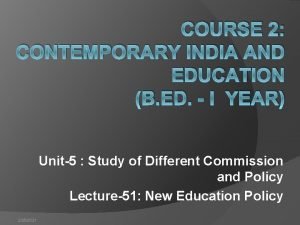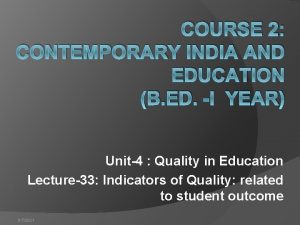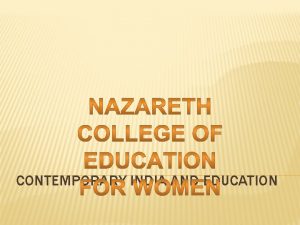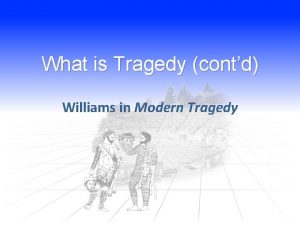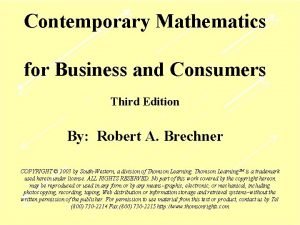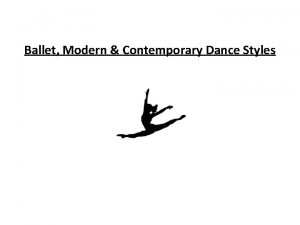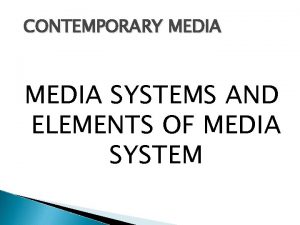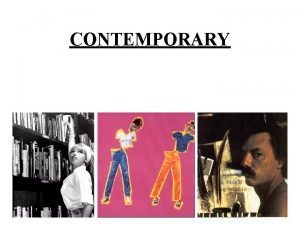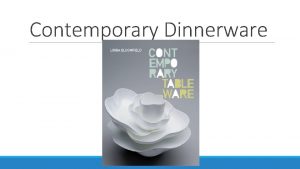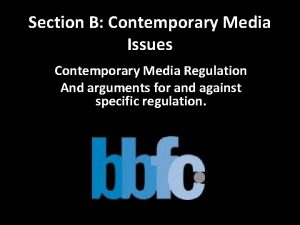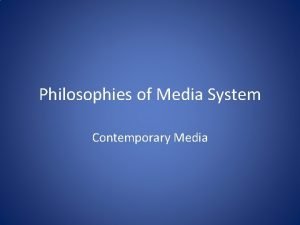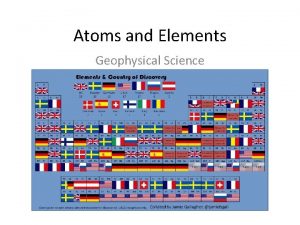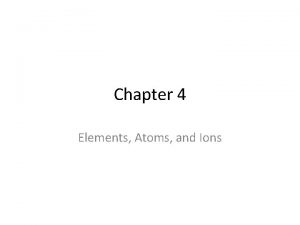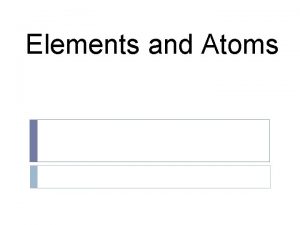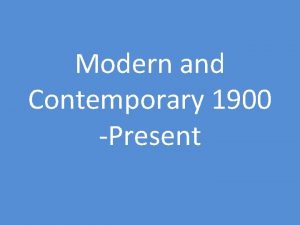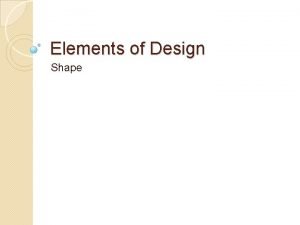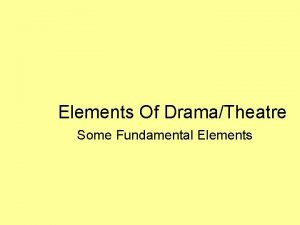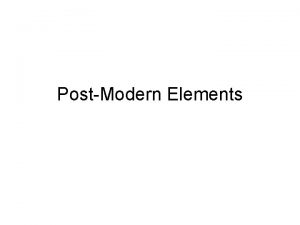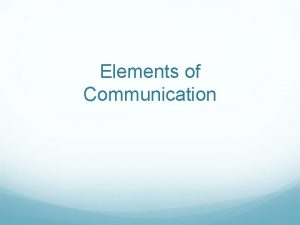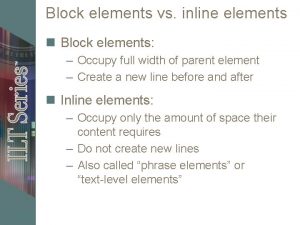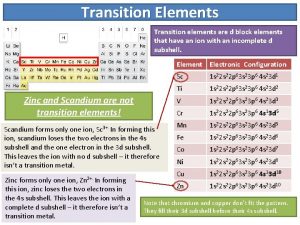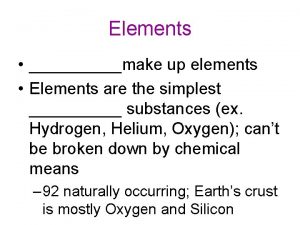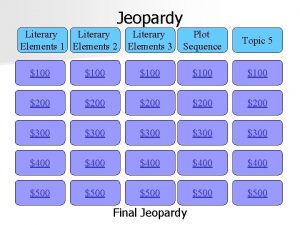CONTEMPORARY MEDIA SYSTEMS AND ELEMENTS OF MEDIA SYSTEM































- Slides: 31

CONTEMPORARY MEDIA SYSTEMS AND ELEMENTS OF MEDIA SYSTEM

Media Systems � media system can be defined as an internally complex, autonomous entity being part of a greater whole, such as a country, also treated as a system. � The media system is comprised of institutional structures and final products which recipients use directly and frequently as they are addressed to them (newspapers, journals, radio and TV programmes) as well as entities (such as press agencies, distributors) with which people are less familiar with but which, nevertheless, are crucial to the functioning of the media system.

Types of Media Systems �Western Media System �Revolutionary Media System �Communist Media System �Developmental Media System �Authoritarian Media System

Western Media System �Media privately owned �Privately supported (advertising) �Free flow of ideas/diversity of views �Free of government control �Rarest form of media existing where. . . �Press is 4 th estate

Western Media System �Common law protects individuals �High income, literacy, education �Multi-party democracy �Tradition of independent journalism

Problems in Western Media �Profit-making emphasis �Concentration of ownership

Revolutionary Media �Illegal/subversive �Used to overthrow �“Underground” �Short term �People at odds with government �Alternative forms

Communist Media �Owned and controlled by state �Instrument of rule �Goal is nation-building �“News” is what’s important to state �Originally a revolutionary tool

Lenin on communist media “…free press gives freedom to oppress, deceive and exploit the masses…”

Developmental Media �The goal is nation-building �Explain to people their role in the new social order �Temporary �No freedom of expression �Top - down flow of information

Authoritarian Media �Oldest form of media �Press supports the state �Top - down flow of information �Ruler decides what is published �Maintain status quo �Evolved into Communist & Developmental

Political infrastructures � 1 st world: Industrialized � 2 nd world: Communist � 3 rd world: Undeveloped

Relationship to government � 1 st world: Press independent � 2 nd world: Press under control � 3 rd world: Press mobilized to aid development

The Global Village �Cultural homogenization �Homogenization of language �The Instantaneous transmission of news: What is its impact?

Cultural Characteristics of a Country � Language � Identity � Occasions � Dress code � Attitude values � Norms and values � Beliefs and practices � Food

Philosophies of media system � Cultural imperialism � Media imperialism � Theories of communication � Concept of ICTs

Cultural imperialism � culture of a large and powerful country, organization, etc. having a great influence on another less powerful country. � According to theory of cultural imperialism, less economically prominent cultures essentially import culture from wealthier countries

Cultural imperialism � via the global transmission of media. As one society exerts cultural influence over another, the latter society adopts its customs, philosophies, worldviews and general ways of life. � Under the imposition of another culture, the “lesser” culture is thought to lose some of its own cultural identity in the process.

Media Imperialism �The one-way flow of information to developing nations. �The imposition of western culture and values on developing nations.

Media imperialism � media imperialism, refers to a situation in which a culture is chiefly exposed to the media interests of another society rather than their own � the affected country or culture's media is not exported in turn to the influencing country in any significant fashion, making media and cultural imperialism a strictly one-way street.

Theories of Communication � The study of communication and mass media has led to the formulation of many theories � Communication theories help in determining the affects of mass media as a business opportunity, an educator, a watchdog, and an entertainer

Cont… � structural and functional theories believe that social structures are real and function in ways that can be observed objectively; � cognitive and behavioral theories tend to focus on psychology of individuals � interactions theories view social life as a process of interaction;

Cont… � interpretive theories uncover the ways people actually understand their own experience � critical theories are concerned with the conflict of interests in society and the way communication perpetuates domination of one group over another.

Information and communications technology � ICT (information and communications technology - or technologies) is an umbrella term that includes any communication device or application, encompassing: radio, television, cellular phones, computer and network hardware and software, satellite systems and so on, as well as the various services and applications associated with them, such as videoconferencing and distance learning.

Role of ICTs � ICTs are often spoken of in a particular context, such as ICTs in education, health care, or libraries. � Information and Communication Technologies are significant in current era of communication. � ICTs have been widely used to produce as well as disseminate information.

Cont… � According to the European Commission, the importance of ICTs lies less in the technology itself than in its ability to create greater access to information and communication in underserved populations.

Media Content � Content itself is what the end-user derives value from. Thus, "content" can refer to the information provided through the medium, the way in which the information was presented, as well as the added features included in the medium in which that information was delivered. � The medium however, provides little to no value to the end-user without the information and experiences that make up the content. Communication theory philosopher Marshall Mc. Luhan famously coined the phrase, "The medium is the message. "

Cont… � Content of media is greatly dependent on the society it works. Content is very important because it influence people’s mind and they start to work according to that. Content works like a bullet. � A content shown on media can never be against a society’s practices otherwise it will not be accepted by the people. Western media content is totally different than Pakistani media. Because they show the content according to their practices and Pakistani media content depicts its values.

Cont… �Every content has a message, it can be constructive or destructive. that particular message/content causes to bring a huge change in public’s mind and eventually in a society. �If we say that media make people than it would not be wrong. But it’s the Content behind that media that continuously brings a change. Content is very important because alone any medium can do nothing.

Media Content must… � bring change � create awareness � disseminate a message � follow the policy and rules � Public’s demand � Society’s rules and norms � Challenges of other systems

Accessibility of Media � access to media is a right, not a privilege. Media comes in many forms and media accessibility goes beyond simply having access. � It's imperative that the content can be consumed by people of all abilities. � Inclusion is achieved when a universal user experience is provided to the widest possible audience.
 Contemporary issues in information systems
Contemporary issues in information systems 7 characteristics of contemporary dance
7 characteristics of contemporary dance Decision support systems and intelligent systems
Decision support systems and intelligent systems Contemporary methods for determining system requirements
Contemporary methods for determining system requirements Contemporary methods for determining system requirements
Contemporary methods for determining system requirements Overhead allocation
Overhead allocation Is earth a closed system or open system
Is earth a closed system or open system Digestive system respiratory system and circulatory system
Digestive system respiratory system and circulatory system Dicapine
Dicapine Embedded systems vs cyber physical systems
Embedded systems vs cyber physical systems Elegant systems
Elegant systems Architecture of windowing system
Architecture of windowing system Who are the people involved in media
Who are the people involved in media What are drama elements
What are drama elements Hydrosulfuric acid
Hydrosulfuric acid Http //elements.wlonk.com/elements table.htm
Http //elements.wlonk.com/elements table.htm Themes of folktales
Themes of folktales Three elements of folktales
Three elements of folktales History of midwifery ppt
History of midwifery ppt Florence nightingale definition
Florence nightingale definition Contemporary management issues and challenges
Contemporary management issues and challenges Multiple equilibria: a diagrammatic approach
Multiple equilibria: a diagrammatic approach Contemporary models of development and underdevelopment
Contemporary models of development and underdevelopment Contemporary issues in tourism
Contemporary issues in tourism Course 2 contemporary india and education
Course 2 contemporary india and education Course 2 contemporary india and education
Course 2 contemporary india and education Course 2 contemporary india and education
Course 2 contemporary india and education Contemporary india and education
Contemporary india and education Tragedy and contemporary ideas by raymond williams
Tragedy and contemporary ideas by raymond williams Alon global marketing download
Alon global marketing download Contemporary mathematics for business and consumers
Contemporary mathematics for business and consumers Contemporary dance positions
Contemporary dance positions
